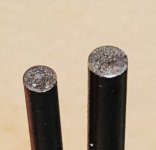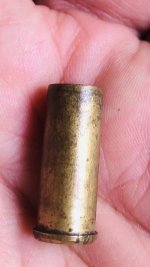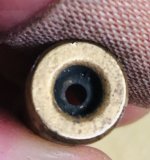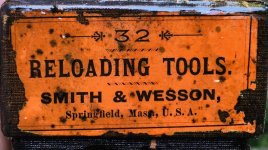Thanks Kinman,
Any study on flash holes would be interesting.
Just to be clear, the focus is on a consistent black powder burn rate from one cartridge to the next. If your flash hole is too small the result will be an inconsistent burn rate between rounds resulting in poor bullet placement at the target. Or another way to say it would be an unacceptable variance in bullet speed.
I was looking through my old ammo collection and realized the best early case examples to study would be very early non head stamped cases of all pistol calibers. Why? Because they are all pre-1882 cases and would clearly show early original factory black powder flash hole sizes. See photo
I hate to pull bullets on these early cases because they are rare now and quite valuable so I'm looking for empties, dug ups, etc
So far every example that I have looked at the flash holes are huge! Which supports that black powder loads required a significantly larger flash hole to achieve a "consistent powder burn" during the late 1800's black powder Era. What size for each specific caliber? No idea.
The 45's are huge! (.125+) I looked at a 38 S&W non head stamped empty and it mics at .105. We need to see a lot more to confirm a standard size per caliber. What I'm seeing so far is that each caliber is different.
Murph








